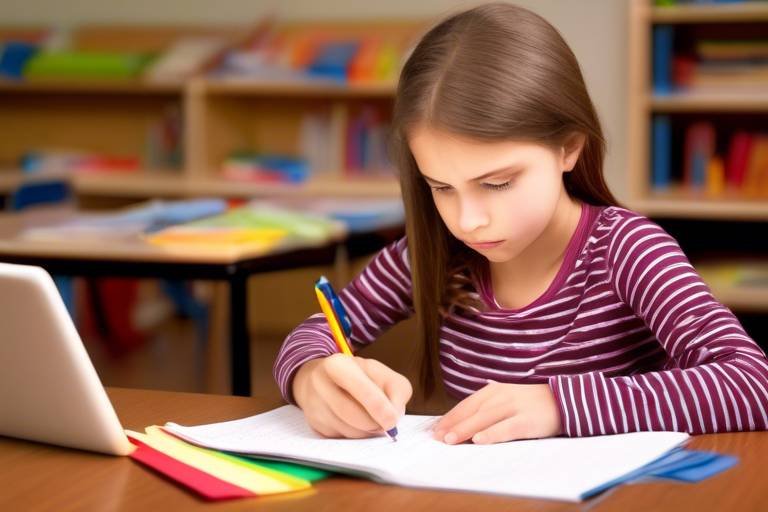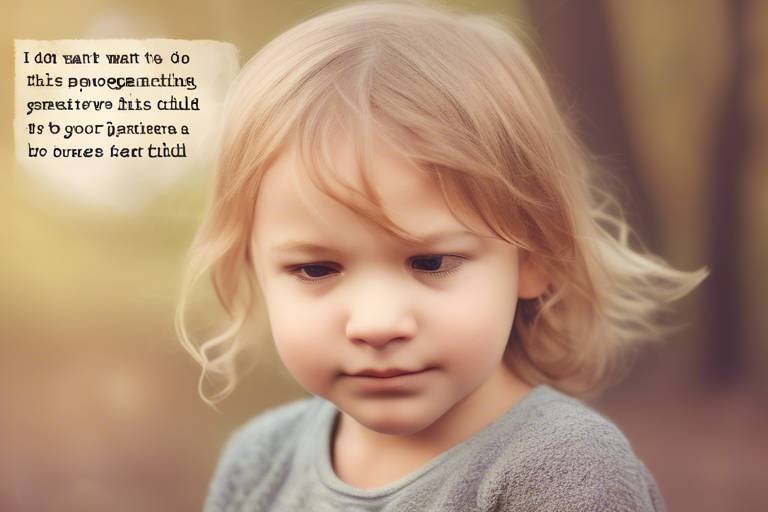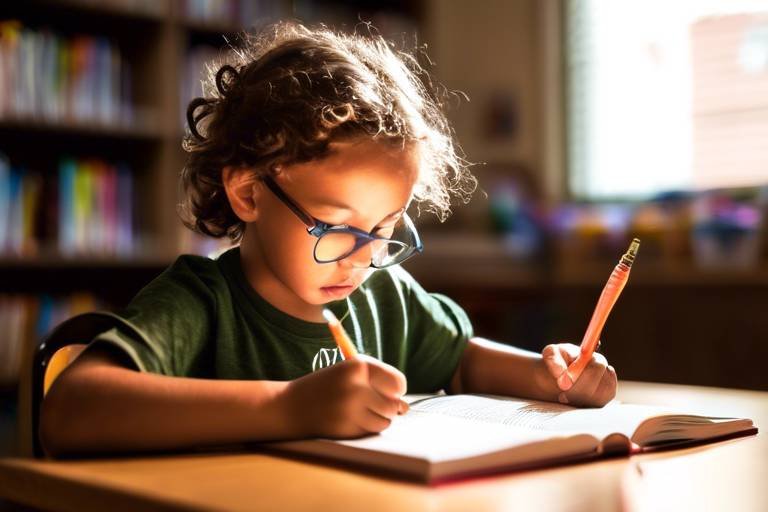10 Ways to Cultivate Patience in Your Child
This article explores effective strategies for nurturing patience in children, helping them develop emotional resilience and better coping skills for life's challenges.
Recognizing why patience is a vital skill for children can help parents emphasize its value in daily life, promoting emotional and social growth. In a world that often demands instant gratification, teaching children to wait, work through challenges, and manage their emotions is more important than ever. Patience is not just about waiting; it's about how we behave while we're waiting. When children learn to be patient, they develop a sense of control over their emotions and reactions, which lays the foundation for strong relationships and effective problem-solving skills.
Parents can teach patience by demonstrating it in their actions and reactions, providing children with a live example of how to handle frustration and delays. Think about it: children are like little mirrors, reflecting what they see. When you show patience in everyday situations—like waiting in line or dealing with a slow internet connection—you’re not just handling the moment; you’re also teaching your child how to respond when things don’t go as planned. Modeling patience can be as simple as taking a deep breath and counting to ten when you feel frustrated. This not only diffuses your own stress but also shows your child that it’s okay to take a moment to collect themselves.
Engaging in mindfulness activities can help children learn to be present and calm, fostering an environment where patience can flourish. Mindfulness teaches kids to focus on the moment and appreciate what they have, rather than constantly looking for the next big thing. Activities like yoga, nature walks, or even simple breathing exercises can be great ways to introduce mindfulness into your child's routine.
Simple breathing techniques can teach children to manage their emotions and develop patience during stressful situations. For example, the "5-7-8" breathing technique is a fantastic way to calm the mind. Inhale for a count of five, hold for seven, and exhale for eight. This exercise not only helps them to relax but also gives them a tool to use when they feel overwhelmed.
Incorporating guided meditation into daily routines can help children learn focus and patience through relaxation practices. There are many apps and online resources available that offer short, engaging meditations designed specifically for kids. Just a few minutes of guided meditation can make a significant difference in a child's ability to cope with frustration and delays.
By setting achievable goals and expectations, parents can help children understand that patience is often required to reach their objectives. It’s important to communicate that not everything happens immediately and that some things take time. For example, if your child is learning to ride a bike, remind them that it’s normal to fall a few times before mastering it. Celebrate their progress, no matter how small, and encourage them to keep trying. This not only builds their patience but also their resilience.
A nurturing home atmosphere encourages children to practice patience, allowing them to feel secure while they learn this important skill. When children feel safe and supported, they are more likely to express their feelings and frustrations openly. This open communication fosters an environment where patience can thrive.
Fostering open dialogue about feelings can help children express their frustrations and learn to wait for solutions together. Encourage your child to talk about their feelings and validate their emotions. When they feel heard, they are more likely to practice patience because they know they can express themselves without fear of judgment.
Recognizing and celebrating moments when children practice patience reinforces positive behavior and encourages them to continue developing this skill. Whether it’s waiting for a turn during a game or patiently helping with chores, acknowledging these moments can boost their confidence. You might say, “I noticed how patiently you waited for your turn! That was really great!” This kind of positive reinforcement is like fuel for their patience-building journey.
- Why is patience important for children? Patience helps children develop emotional resilience, better coping skills, and stronger relationships.
- How can I model patience for my child? Demonstrate patience in your actions, like waiting calmly in lines, and use breathing exercises to manage frustration.
- What activities can help teach my child patience? Mindfulness practices, such as guided meditation and breathing exercises, can be effective in teaching patience.
- How can I create a supportive environment for my child? Foster open communication and celebrate small wins to encourage your child to practice patience.

Understanding the Importance of Patience
Patience is not just a virtue; it's a crucial life skill that children need to develop as they navigate through various challenges. Imagine a world where everyone could wait their turn, handle disappointments gracefully, and approach tasks with a calm demeanor. Sounds dreamy, right? Well, cultivating patience in children can pave the way for such a reality. It's essential for emotional resilience, which is the ability to bounce back from setbacks and keep moving forward. When children learn to be patient, they also learn to manage their emotions, leading to better social interactions and improved academic performance.
Why is patience so vital? For starters, it teaches children that not everything comes instantly. In an age of instant gratification, where everything is just a click away, the ability to wait for something can feel foreign. This is where the importance of patience comes in. It helps children understand that good things often take time. Whether it's waiting for their favorite toy to be restocked or learning a new skill, patience allows them to appreciate the journey rather than just the destination.
Moreover, patience is linked to emotional regulation. Children who practice patience are less likely to throw tantrums or react impulsively when things don’t go their way. They learn to pause, reflect, and respond thoughtfully instead of reacting out of frustration. This skill is invaluable, especially in social settings where conflicts may arise. In fact, studies have shown that children who exhibit patience tend to have better relationships with their peers and adults, as they are more empathetic and understanding.
Additionally, patience fosters resilience. Life is full of ups and downs, and teaching children to be patient equips them with the tools to handle disappointments and setbacks with grace. When they face challenges, they are more likely to persevere rather than give up. This resilience can translate into various aspects of their lives, from academics to personal relationships, enabling them to tackle obstacles head-on.
To summarize, the importance of patience in children cannot be overstated. It is a foundational skill that contributes to their emotional well-being, social interactions, and overall success in life. By recognizing the value of patience, parents can take proactive steps to nurture this skill in their children, setting them up for a brighter, more fulfilling future.

Modeling Patience as a Parent
As parents, we often find ourselves in situations that test our patience—whether it's waiting in line at the grocery store with a fidgety child or dealing with a toddler's tantrum over a toy. These moments are not just challenges; they are golden opportunities to model patience for our children. When we respond calmly and thoughtfully, we show them that patience is not just a virtue but a practical skill that can be developed over time.
Children are like sponges, soaking up everything around them. They observe our actions and reactions, often mimicking our behavior. If we react with frustration or impatience, we inadvertently teach them that it's acceptable to lose control when things don't go our way. Instead, we should aim to demonstrate a more composed response. For instance, instead of sighing dramatically when waiting, we can engage our children in a fun conversation or a game. This not only distracts them but also shows that waiting can be an enjoyable experience.
One effective way to illustrate patience is to share our own experiences with waiting. For example, when we tell our children about a time we had to wait for something we really wanted—like a special event or a birthday gift—we can emphasize how that waiting made the eventual reward even sweeter. This storytelling technique serves to reinforce the idea that good things often come to those who wait, making the concept of patience more relatable and less abstract.
Additionally, we can create opportunities for our children to practice patience in everyday life. Simple activities such as cooking together, where they have to wait for the food to cook, or planting seeds and watching them grow, can be excellent practical lessons. These experiences teach them that some things take time, and the end result is worth the wait. By engaging in these activities, we not only bond with our children but also provide them with a real-life context for patience.
Moreover, it's crucial to maintain a calm demeanor during stressful situations. When we face delays or challenges, our tone of voice and body language can convey a lot. If we remain calm and composed, our children are more likely to mirror that behavior. They learn that it's possible to handle frustration without resorting to anger or impatience. This kind of modeling is powerful; it equips them with the tools they need to navigate their own emotional responses.
In conclusion, modeling patience as a parent is about more than just telling our children to be patient. It's about living it, showing them through our actions and words that patience is a valuable skill. By creating a supportive environment and engaging in activities that require waiting, we can help our children cultivate this essential quality. Remember, every moment of frustration can be transformed into a teaching moment, paving the way for our children to develop emotional resilience and coping skills that will serve them throughout their lives.
- Why is patience important for children? Patience helps children develop emotional resilience, better coping skills, and improves their ability to handle life's challenges.
- How can I model patience effectively? You can model patience by remaining calm in frustrating situations, sharing your own experiences with waiting, and engaging in activities that require patience.
- What activities can help my child practice patience? Cooking, gardening, and waiting for special events are great activities that can teach children the value of patience.

Practicing Mindfulness Together
In our fast-paced world, where everything seems to be happening at lightning speed, it's easy for both parents and children to feel overwhelmed. This is where mindfulness comes into play, acting as a soothing balm for our busy lives. Practicing mindfulness together not only helps children learn to be present but also strengthens the bond between parent and child. Imagine sitting together, taking a deep breath, and letting the chaos of the day drift away. It’s not just about finding a moment of calm; it’s about teaching children the invaluable skill of patience.
Mindfulness activities can be as simple as observing nature or focusing on the sensations of breathing. For instance, you can take a walk in the park and encourage your child to notice the colors of the leaves, the sounds of the birds, or the feel of the breeze on their skin. This practice not only enhances their ability to focus but also cultivates a sense of appreciation for the world around them. By engaging in these activities together, you're not just teaching them patience; you're also creating lasting memories that they'll cherish.
One effective way to introduce mindfulness is through breathing exercises. These can be fun and engaging for children. You might say, "Let's pretend we're blowing up a big balloon!" Inhale deeply through the nose and then exhale slowly through the mouth, mimicking the action of inflating a balloon. This playful approach not only captures their attention but also teaches them how to manage their emotions in a tangible way. Over time, these exercises can become a go-to strategy for your child when they feel anxious or impatient.
Another great method is to incorporate guided meditation into your routine. There are many child-friendly meditation apps and videos available that can guide you both through short sessions. These meditations often use stories or visualizations that resonate with children, making the experience enjoyable. Just imagine your child sitting cross-legged, eyes closed, and imagining themselves floating on a cloud, drifting away from their worries. This not only helps them develop patience but also instills a sense of calm that they can carry into their daily lives.
Incorporating mindfulness into your daily routine can be a game-changer. Perhaps you could set aside a few minutes each day for mindfulness practice. Whether it’s after school or before bedtime, this dedicated time can become a cherished ritual. Remember, the goal isn’t perfection; it’s about creating a space where your child feels safe to explore their emotions and learn that waiting can be a beautiful part of life.
Ultimately, by practicing mindfulness together, you’re not just fostering patience in your child; you’re equipping them with essential life skills. They will learn to navigate their emotions, cope with stress, and understand that sometimes, the best things in life come to those who wait. So, why not take a moment today to breathe, be present, and embrace the journey of patience together?
- What is mindfulness? Mindfulness is the practice of being fully present and engaged in the moment, without judgment. It helps individuals focus on their thoughts and feelings in a calm and accepting manner.
- How can I start practicing mindfulness with my child? Begin with simple breathing exercises or nature walks. Use playful language to engage your child and make the experience enjoyable.
- Are there resources for guided meditation for children? Yes, there are many apps and online videos designed specifically for children that offer guided meditations in a fun and relatable way.
- How does mindfulness help with patience? Mindfulness teaches children to slow down, focus on the present, and understand their emotions, which directly contributes to developing patience.

Breathing Exercises
Breathing exercises are a fantastic way to help children cultivate patience, especially during moments of stress or frustration. Think of breathing as your body's natural way of resetting itself, much like rebooting a computer when it freezes. When children learn to focus on their breath, they can calm their minds and bodies, giving them the tools to handle challenging situations with grace. But how do we teach them these techniques? It’s simpler than you might think!
One effective method is the “Breathe Like a Balloon” exercise. In this fun activity, children can visualize their bellies as balloons. When they inhale deeply through their noses, they can imagine the balloon inflating, and as they exhale slowly through their mouths, they can picture it deflating. This not only makes the exercise engaging but also helps them understand the physical sensations of deep breathing. Here’s how to guide them through it:
- Find a comfortable position: Sit cross-legged on the floor or in a chair, ensuring their back is straight.
- Close their eyes: Encourage them to close their eyes to eliminate distractions.
- Inhale deeply: Ask them to take a deep breath through their nose, feeling their belly expand like a balloon.
- Exhale slowly: Instruct them to slowly breathe out through their mouth, imagining the balloon shrinking.
- Repeat: Encourage them to repeat this process for several minutes, focusing solely on their breath.
Another great technique is the “Count Your Breaths” exercise. This method helps children learn to focus and be patient as they count their breaths. Here’s how it works:
- Instruct them to take a deep breath in and then breathe out.
- As they breathe in, they should silently count “one” in their minds.
- With each subsequent breath, they continue counting until they reach five.
- If they lose track, gently remind them to start over, reinforcing the idea that patience is part of the process.
These breathing exercises not only teach children how to manage their emotions but also instill a sense of mindfulness. By incorporating these practices into your daily routine, you can create a safe space for children to express their feelings and learn the art of waiting. Remember, patience is like a muscle; the more they practice, the stronger it becomes!
Q: How often should we practice breathing exercises with our child?
A: Ideally, incorporate breathing exercises into your daily routine, perhaps during calm moments or before bedtime. Even a few minutes a day can make a significant difference.
Q: What if my child finds it difficult to focus during these exercises?
A: It's common for children to struggle with focus. Encourage them gently and remind them that it's okay to feel distracted. You can also make the exercises more engaging by using visual aids or fun themes.
Q: Can these exercises be beneficial for adults as well?
A: Absolutely! Breathing exercises are beneficial for all ages. They can help adults manage stress, improve concentration, and foster a sense of calm.

Guided Meditation
Guided meditation is a fantastic tool for teaching children the art of patience. Imagine taking a journey where the destination is a peaceful mind and a calm heart. This practice not only helps kids learn how to focus their thoughts but also instills a sense of tranquility that is essential for developing patience. When children engage in guided meditation, they are led through a series of calming visualizations and breathing exercises that can significantly reduce anxiety and stress levels.
To start, consider incorporating short guided meditation sessions into your child's daily routine. These can be as brief as five minutes, making them easy to fit into busy schedules. During these sessions, children can learn to observe their thoughts and feelings without judgment, which is a crucial aspect of patience. By recognizing their emotions, they begin to understand that waiting and being patient are part of life's natural rhythm.
Here are some benefits of guided meditation for children:
- Enhanced Focus: Children learn to concentrate on the present moment, which helps them stay engaged and patient during tasks.
- Emotional Regulation: By practicing mindfulness, they can better manage their emotions, especially when faced with frustration or delays.
- Stress Reduction: Guided meditation can lower stress levels, making it easier for children to remain calm in challenging situations.
Moreover, guided meditation can be a fun and interactive experience. You can find numerous apps and online resources tailored specifically for children, featuring colorful animations and engaging stories. These tools make meditation accessible and enjoyable, transforming what might seem like a daunting task into an exciting adventure. As your child becomes more comfortable with meditation, they will naturally start to exhibit greater patience in their daily lives.
In conclusion, integrating guided meditation into your child's routine is not just about relaxation; it's about cultivating a mindset that embraces patience. With consistent practice, children can learn to navigate life's challenges with grace and resilience, making them better equipped to handle whatever comes their way.

Setting Realistic Expectations
When it comes to fostering patience in children, one of the most effective strategies is . Children often grapple with the concept of time and the idea that some things simply take longer than they’d like. By helping them understand that patience is a necessary part of achieving their goals, you equip them with a vital life skill. Imagine trying to bake a cake; if you rush the process, you might end up with a gooey mess instead of a delicious treat. Similarly, when children learn to appreciate the journey rather than just the destination, they develop resilience and emotional intelligence.
It's essential to recognize that children are not miniature adults; their understanding of time and patience is still developing. Therefore, parents should focus on setting achievable goals that align with their child's age and maturity level. For instance, if a child is eager to learn how to ride a bike, it’s important to acknowledge that mastering this skill won’t happen overnight. Instead of expecting them to ride confidently in one go, break it down into smaller, manageable steps:
- First, practice balancing on the bike.
- Next, work on pedaling while someone holds the bike steady.
- Finally, encourage them to try riding independently.
By framing learning experiences in this way, you can help your child see that patience is not just about waiting but about working towards something meaningful. This approach not only builds patience but also instills a sense of accomplishment when they reach each milestone. Remember, it's all about the process!
Moreover, it’s crucial to communicate these expectations clearly. Use simple language to explain why certain things take time, and encourage your child to ask questions. For example, if they are waiting for their favorite show to come on, discuss how the anticipation can make the experience even more enjoyable. This dialogue can be a great bonding experience, allowing them to express their frustrations while you guide them through the waiting period.
Finally, consider using visual aids to help children grasp the concept of time better. For instance, you could create a simple chart that outlines the steps required to achieve a goal, along with a timeline for each step. This not only makes the process tangible but also gives them a sense of control over their journey, reinforcing the idea that patience is a part of growth. In the end, teaching children to set realistic expectations is about nurturing their understanding of life’s rhythms, helping them to embrace the waiting periods as opportunities for growth.
Q: How can I tell if my child is struggling with patience?
A: Signs may include frequent meltdowns, difficulty waiting for their turn, or showing frustration when things don’t happen quickly. Observing these behaviors can help you identify when to step in and guide them.
Q: What age is appropriate to start teaching patience?
A: You can start introducing concepts of patience as early as preschool age. Simple activities that require waiting or taking turns can lay the groundwork for more complex lessons later.
Q: Are there specific activities that can help develop patience?
A: Yes! Activities like puzzles, board games, or even cooking can be excellent ways to practice patience. They require children to wait for their turn or to see the outcome of their efforts, making the learning process fun and engaging.

Creating a Supportive Environment
Creating a supportive environment is essential for nurturing patience in children. Imagine your home as a safe haven, a place where your child feels comfortable expressing their emotions without the fear of judgment. When children know they can share their feelings openly, they are more likely to develop the patience needed to work through their frustrations. This kind of environment fosters emotional security, which is crucial for their overall development.
When parents actively create a nurturing atmosphere, they set the stage for children to practice patience. Think of it like planting a garden; you need the right soil, sunlight, and water for your plants to grow. Similarly, children need a supportive backdrop to cultivate their emotional skills. This can include setting aside time for family discussions where everyone shares their day, their challenges, and how they coped with them. Such practices not only build patience but also strengthen family bonds.
Moreover, it’s important to recognize that children often mirror their parents' behavior. If they see you handling stress with grace and patience, they are likely to adopt similar strategies. For instance, if a delay occurs during a family outing, instead of showing frustration, you could say, “It looks like we’ll have to wait a bit longer, but that’s okay! We can use this time to talk or play a game.” This teaches children that waiting can be a positive experience rather than a negative one.
Another key aspect of creating a supportive environment is providing opportunities for children to practice patience through everyday activities. For example, cooking together can be a fun and engaging way to teach patience. As you prepare a meal, you can emphasize the importance of waiting for things to cook properly or allowing time for flavors to meld. You might say, “Just like we need to wait for the cookies to bake, sometimes we need to wait for good things to happen in life.” This analogy helps them connect patience with positive outcomes.
In addition to these strategies, consider implementing routines that encourage patience. Routines provide children with a sense of stability and predictability. For instance, having a designated time for homework, play, and relaxation can help children understand that each activity has its own time, and good things often come to those who wait. You can even create a visual schedule that outlines daily activities, reinforcing the idea that waiting is a part of life.
Lastly, it’s essential to celebrate the small victories when your child demonstrates patience. When they wait their turn during a game or resist the urge to interrupt while someone else is speaking, acknowledge their efforts. A simple “I’m proud of you for being so patient!” can go a long way in reinforcing this behavior. This not only boosts their confidence but also encourages them to continue practicing patience in the future.
- How can I encourage my child to be more patient?
Start by modeling patience in your own behavior, setting realistic expectations, and creating opportunities for them to practice waiting in everyday situations. - What activities can help teach patience?
Engaging in activities like cooking, gardening, or playing board games can provide excellent opportunities for children to learn the value of patience. - How do I handle my child's impatience?
Address their feelings openly, help them understand the situation, and guide them through techniques such as deep breathing or taking a break.

Encouraging Open Communication
Encouraging open communication within your family is like planting seeds in a garden; with the right care and attention, they can grow into something beautiful. When children feel safe to express their thoughts and feelings, they are more likely to develop patience and emotional resilience. Imagine a scenario where your child faces a frustrating situation, like waiting for their turn in a game or dealing with a delayed reward. If they can openly discuss their feelings with you, they are not only processing their emotions but also learning that patience is a part of life.
One effective way to foster this open dialogue is by creating a safe space for conversations. This means setting aside time each day, perhaps during dinner or before bedtime, where everyone can share their thoughts without fear of judgment. Use open-ended questions to guide the discussion. For example, instead of asking, “Did you have a good day?” try, “What was the best part of your day and why?” This approach encourages children to elaborate on their feelings and experiences, helping them articulate their frustrations and desires.
Additionally, it’s essential to model effective communication yourself. Children learn by observing their parents. When they see you discussing your feelings or frustrations openly and calmly, they are more likely to mimic that behavior. If you encounter a delay or a frustrating situation, verbalize your feelings. Say something like, “I’m feeling a bit impatient waiting in this line, but I know it will be worth it.” This not only teaches them about patience but also shows them that it’s okay to feel frustrated.
Furthermore, you can incorporate activities that promote communication skills. For instance, family game nights can be a fantastic way to practice patience while also encouraging dialogue. During these games, discuss strategies and feelings openly. If someone loses, talk about how it feels and how they can handle that disappointment. This creates an environment where patience is not just a lesson but a shared experience.
In summary, by nurturing open communication, you’re not just helping your child express their feelings; you’re equipping them with the tools to develop patience and resilience. Remember, patience isn't just about waiting; it's about how we behave while we wait. By fostering a dialogue, you’re teaching your child that it’s perfectly normal to feel frustrated and that talking about those feelings is a healthy way to cope. So, let’s keep the conversation going!
- How can I encourage my child to express their feelings?
Start by creating a safe and open environment for discussions. Use open-ended questions and actively listen to their responses. - What activities can help improve my child's patience?
Engage in activities like board games, cooking together, or even gardening, where waiting and patience are required. - How can I model patience for my child?
Demonstrate patience in your daily life by verbalizing your feelings during frustrating moments and showing how you cope with delays.

Celebrating Small Wins
When it comes to cultivating patience in children, one of the most effective strategies is to celebrate small wins. Think of it as planting seeds of success that will grow into a garden of resilience and emotional strength. Children thrive on recognition, and when they feel acknowledged for their efforts, it boosts their self-esteem and motivates them to keep trying. But what does celebrating small wins look like in practice?
First, it’s essential to be attentive to the moments when your child demonstrates patience, no matter how minor they may seem. Did they wait their turn during a game? Or perhaps they managed to hold off on asking for a snack until it was time? These moments are golden opportunities for reinforcement. A simple acknowledgment can go a long way. You might say, “I noticed how patient you were while waiting for your turn! That was really impressive!” Such affirmations help children understand that patience is a valuable trait worthy of recognition.
Moreover, creating a celebration ritual can be a fantastic way to make these moments even more special. You could set aside a specific time each week to discuss and celebrate all the little victories your child has achieved. This could be during a family dinner or a cozy evening chat. You might even consider keeping a “patience journal” where you jot down these moments. At the end of each week, you can read through it together and reflect on how far they’ve come. This not only reinforces the behavior but also creates a lasting memory of their growth.
Additionally, incorporating fun and engaging activities can enhance the celebration experience. For instance, you could create a
| Date | Situation | Response | Celebration |
|---|---|---|---|
| March 1 | Waited patiently for a sibling | Smiled and played quietly | Extra story at bedtime |
| March 5 | Held off on asking for a snack | Waited until snack time | Sticker on the patience chart |
As you fill this table with their achievements, it becomes a visual representation of their progress, making the concept of patience more tangible and rewarding. You can even involve your child in this process, allowing them to suggest how they’d like to celebrate their wins. This way, they feel a sense of ownership over their journey towards becoming more patient.
Ultimately, celebrating small wins is about creating an environment where patience is recognized and valued. It’s a way to show your child that every step they take towards being more patient is significant and worthy of celebration. By doing so, you are not only nurturing their ability to wait but also instilling a deeper understanding of the rewards that come with perseverance and emotional resilience.
Q1: How can I help my child understand the concept of patience?
A1: You can explain patience through simple analogies, such as comparing it to waiting for a flower to bloom. Engage them in activities that require waiting, like baking, where they can see the benefits of patience firsthand.
Q2: What if my child struggles to be patient despite my efforts?
A2: It’s important to remember that developing patience is a gradual process. Continue to model patience yourself and celebrate any small improvements. Consistency and encouragement are key!
Q3: Are there specific activities that promote patience?
A3: Yes! Activities like puzzles, board games, or even gardening can help children practice patience naturally. These activities require waiting and strategic thinking, reinforcing the value of patience in a fun way.
Frequently Asked Questions
- Why is patience important for children?
Patience is crucial for children as it helps them develop emotional resilience. It enables them to manage frustration and delays, fostering better coping skills for life's challenges. When children learn to be patient, they also enhance their social interactions and problem-solving abilities.
- How can I model patience for my child?
Modeling patience involves demonstrating calmness in frustrating situations. For instance, when things don’t go as planned, express your feelings calmly and show your child how to respond positively. Your actions serve as a live example, teaching them that patience is a valuable trait.
- What mindfulness activities can I do with my child?
Engaging in mindfulness activities like breathing exercises and guided meditation can be incredibly beneficial. These practices help children focus on the present moment, teaching them to remain calm and patient even when faced with challenges.
- How do breathing exercises help develop patience?
Breathing exercises assist children in managing their emotions. By learning to control their breath, they can calm themselves during stressful moments, which in turn fosters a sense of patience as they wait for their feelings to settle.
- What are realistic expectations I should set for my child?
Setting realistic expectations means understanding your child's abilities and limitations. Help them set achievable goals, ensuring that they learn that good things often take time and effort, which requires patience to accomplish.
- How can I create a supportive environment for my child?
A supportive environment is one where children feel safe to express their feelings. Encourage open communication, allowing them to talk about their frustrations and challenges. This creates a nurturing space where patience can grow.
- Why is celebrating small wins important?
Celebrating small wins reinforces positive behavior. When children practice patience and it’s acknowledged, they feel encouraged to continue developing this skill. It builds their confidence and motivates them to keep trying.



















